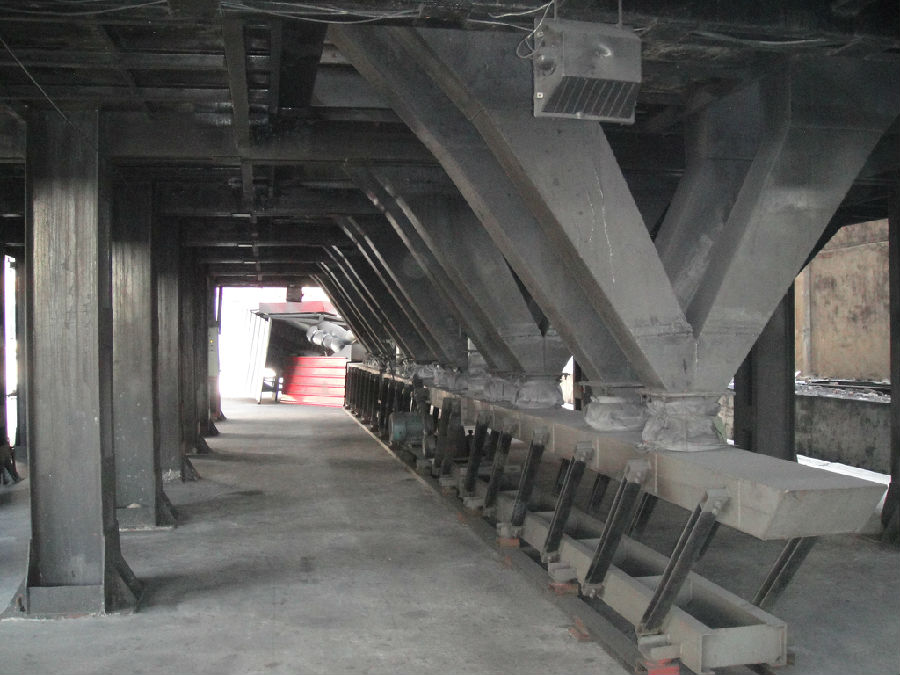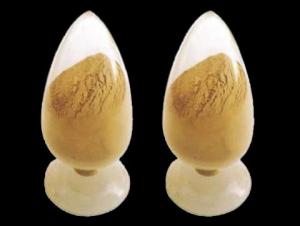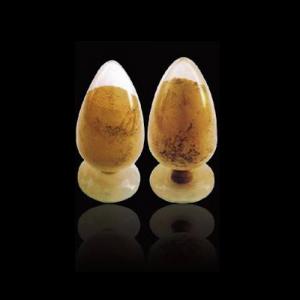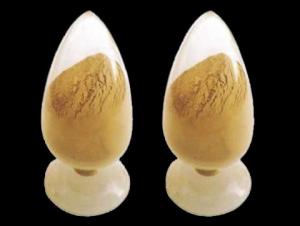Low Nitrogen Carbon Raiser Graphite Petroleum Coke
- Loading Port:
- Shekou
- Payment Terms:
- TT OR LC
- Min Order Qty:
- 20 m.t
- Supply Capability:
- 1000 m.t/month
OKorder Service Pledge
OKorder Financial Service
You Might Also Like
Factory Background
The factory is majorly running and operating carbon additive (pitch coke, calcined petroleum coke and anthracite), low nitrogen carbon additive, and brake pad making material. Company is the long term supplier of Sinosteel Corporation, Shanghai Carbon Corporation, the plant of SGL Group the Carbon Company in China and some largest special carbon products producing plants.
YUAI also supplies huge amout of high quality carbon additive and graphite carbon additive to steel plants, foundries and ferrotungsten plants. YUAI has been assigned by BAO STEEL as the only organization for processing pitch coke for export purpose. The group’s major products are constantly exported to Japan, Korea, Malaysia, South East Asia countries, Europe and America, which receive praises by our consumers.
The group has invested numbers of calcinators in Anhui China to ensure the capability of producing and processing huge amount of carbon additive. Further investment is on process. According to the orders from customers, YUAI is able to processing and providing different specifications of carbon additive and other products. To provide best quality of products and to offer customers most satisfied service is YUAI’s operating objectives.
Calcined Petroleum Coke
FC:98.5%min,
S:0.5%max
A:0.8%max
V:0.7%max
Mositure:0.5%max
Size:1-5mm
This product is mainly used in steel-making and foundry. Calcined Petroleum Coke
Calcined Petroleum Coke comes from delayed coke which extracted from oil refinery. Although Calcined Petroleum Coke contains a little bit higher level of sulfur and nitrogen than pitch coke, the price advantage still makes it widely used during steel-making and founding as a kind of carbon additive/carburant.
Technology:
Laborary Equpment
In our lab,we has a high precision balance,mullfe furnace,sample making machine, dring box,sulfur measurement instrument and other calibratiing equipments.As a result,before deliverung to our customers,our products have to pass a strict test to ensure the quality and components.The testing reports will be sent to our customers to confirm untill they satisfy with it.
Packaging & Delivery
Packaging Detail:25kg paper bag into 1t weaving bag 5kg, 10kg and 20kg weaving bag into 1t weaving bag 25kg weaving bag put on pallet covered with entanglement wrap product direct into packing bag 25kg paper bag put on pallet covered with entanglement Wrap 25kg weaving bag into 1t weaving bag.
Delivery Details: 7 days


- Q:How do monolithic refractories protect the lining of ladles and tundishes?
- Monolithic refractories protect the lining of ladles and tundishes by forming a strong and durable barrier against high temperatures, chemical reactions, and mechanical stresses. These refractories are designed to be resistant to thermal shock and erosion, ensuring that the lining remains intact and unaffected by the molten metal or slag. They also provide insulation, minimizing heat loss and reducing energy consumption. Overall, monolithic refractories act as a reliable shield, extending the lifespan of the ladles and tundishes and preventing any detrimental effects on the lining.
- Q:How do monolithic refractories contribute to the reduction of downtime in iron and steel plants?
- Monolithic refractories contribute to the reduction of downtime in iron and steel plants by providing superior thermal insulation and resistance to high temperatures, reducing the risk of equipment failure and unplanned shutdowns. Their ability to withstand extreme conditions, such as molten metal and slag, allows for extended operational periods without frequent maintenance or replacement. Additionally, monolithic refractories offer quick and easy installation, repair, and maintenance, minimizing the time required for downtime and ensuring a more efficient and productive operation in iron and steel plants.
- Q:What are the main factors affecting the corrosion resistance of monolithic refractories?
- The main factors affecting the corrosion resistance of monolithic refractories include the chemical composition of the refractory material, the temperature and atmosphere in which it operates, the physical properties of the refractory such as porosity and permeability, and the presence of impurities or aggressive agents. Additionally, the design and installation of the refractory lining, as well as the operational practices and maintenance of the system, can also impact its corrosion resistance.
- Q:Can monolithic refractories be used for the lining of reheating furnaces and walking beam furnaces?
- Yes, monolithic refractories can be used for the lining of reheating furnaces and walking beam furnaces. Monolithic refractories are a type of refractory material that is characterized by its ability to be cast or gunned into place, rather than being made up of individual bricks or precast shapes. This makes them highly versatile and adaptable for various furnace applications, including reheating furnaces and walking beam furnaces. Reheating furnaces are used to heat metal products to a specific temperature before further processing, such as rolling or forging. The lining of these furnaces is subjected to high temperatures, thermal cycling, and mechanical stress. Monolithic refractories are well-suited for these conditions, as they have excellent thermal shock resistance and can withstand rapid temperature changes without cracking or spalling. Walking beam furnaces are used in the steel industry for the continuous heating and transport of steel slabs or billets. These furnaces require a lining material that can withstand the abrasion and mechanical stress caused by the movement of the material. Monolithic refractories with high abrasion resistance and good mechanical strength are ideal for the lining of walking beam furnaces. Additionally, monolithic refractories offer other advantages such as easy installation, reduced downtime for repairs, and improved energy efficiency. They can be tailored to specific furnace designs and can be easily repaired or replaced when necessary. In conclusion, monolithic refractories are a suitable choice for the lining of reheating furnaces and walking beam furnaces due to their ability to withstand high temperatures, thermal cycling, mechanical stress, and abrasion. Their versatility, ease of installation, and repair make them a preferred option for these furnace applications.
- Q:How do monolithic refractories contribute to the reduction of heat loss in iron and steel plants?
- Monolithic refractories play a crucial role in reducing heat loss in iron and steel plants through their high thermal insulation properties. These refractories are designed to withstand extreme temperatures and provide excellent resistance to thermal shock and erosion. By lining the walls, roofs, and floors of various equipment and structures in the plants, monolithic refractories help to create a barrier that prevents heat from escaping into the surrounding environment. This insulation not only conserves energy but also ensures efficient heat transfer within the plant, leading to improved productivity and cost-effectiveness.
- Q:How do monolithic refractories enhance the performance of ladle and tundish preheating systems?
- There are several ways in which monolithic refractories play a crucial role in improving the performance of ladle and tundish preheating systems. To begin with, monolithic refractories possess outstanding thermal insulation properties, which aid in retaining heat within the ladle and tundish preheating systems. This insulation ability reduces heat loss and ensures that the preheating systems operate at optimal temperatures. By maintaining a consistent and high heat level, monolithic refractories enable efficient preheating of ladles and tundishes, thereby reducing the time required for the preheating process. Furthermore, monolithic refractories exhibit high refractoriness, enabling them to withstand extreme temperatures without significant degradation. This is especially important for ladle and tundish preheating systems that endure intense heat during operation. The capacity of monolithic refractories to withstand high temperatures ensures their longevity and prevents premature failure, resulting in enhanced performance and reliability of the preheating systems. Moreover, monolithic refractories possess exceptional resistance to thermal shock. The preheating process often subjects ladles and tundishes to rapid temperature changes, which can cause thermal stress and lead to cracking and spalling of the refractory lining. However, monolithic refractories, with their superior resistance to thermal shock, can endure these rapid temperature fluctuations without sustaining significant damage. This resistance guarantees the integrity of the refractory lining, extending the lifespan of the ladle and tundish preheating systems and improving their overall performance. Additionally, monolithic refractories offer good mechanical strength and abrasion resistance. Ladles and tundishes frequently experience mechanical forces, such as stirring and pouring of molten metal. The presence of monolithic refractories with high mechanical strength and abrasion resistance ensures the integrity of the refractory lining even under harsh conditions. This durability allows for prolonged and efficient operation of the preheating systems, contributing to their enhanced performance. In conclusion, monolithic refractories enhance the performance of ladle and tundish preheating systems through their excellent thermal insulation, high refractoriness, resistance to thermal shock, and good mechanical strength and abrasion resistance. These properties enable efficient and reliable preheating, minimize heat loss, prevent premature failure, and prolong the lifespan of the preheating systems, ultimately improving their overall performance.
- Q:How do monolithic refractories impact the quality and performance of iron and steel products?
- Monolithic refractories play a crucial role in influencing the quality and performance of iron and steel products. These refractories, which are composed of a single, solid structure, are used to line the furnaces and other high-temperature processing equipment in the iron and steel industry. The use of monolithic refractories ensures enhanced thermal insulation, corrosion resistance, and stability in the furnace lining. This results in improved energy efficiency and reduced heat loss during the manufacturing process. Additionally, monolithic refractories offer excellent resistance to thermal shock, meaning they can withstand rapid changes in temperature without cracking or deteriorating. The quality and performance of iron and steel products are greatly impacted by the consistent and uniform heat distribution provided by monolithic refractories. This leads to superior metallurgical properties and improved product quality, such as increased strength, enhanced durability, and better surface finish. Furthermore, monolithic refractories contribute to the overall productivity and cost-effectiveness of the iron and steel industry. Their high refractoriness and low maintenance requirements result in extended furnace lining life, reducing downtime and increasing production capacity. This, in turn, leads to higher yields and improved profitability for iron and steel manufacturers. In summary, monolithic refractories have a significant positive impact on the quality and performance of iron and steel products by providing efficient thermal insulation, superior heat distribution, and increased resistance to thermal shock. Their use enhances product quality, productivity, and cost-effectiveness in the iron and steel industry.
- Q:How do monolithic refractories withstand thermal cycling in the iron and steel industry?
- Monolithic refractories withstand thermal cycling in the iron and steel industry through their unique properties and composition. These refractories are made from a single piece or mass, which eliminates joints and weak points that could be susceptible to thermal stress. Additionally, their high thermal conductivity and low thermal expansion help them absorb and distribute heat evenly, reducing the risk of cracking or damage during rapid temperature changes. The use of advanced bonding agents further enhances their durability and resistance to thermal cycling, allowing them to withstand the extreme conditions of the iron and steel industry.
- Q:How do monolithic refractories improve the quality and consistency of iron and steel products?
- Monolithic refractories enhance the quality and consistency of iron and steel products by providing excellent resistance to high temperatures, thermal shock, and chemical attacks. These refractories form a seamless lining within the furnaces and other equipment used in the production process, ensuring optimal insulation and minimizing heat loss. This insulation helps in maintaining stable and controlled temperatures, preventing unwanted variations that can affect the final product's quality. Additionally, monolithic refractories' durability and resistance to wear and tear contribute to consistent and reliable performance, resulting in improved iron and steel product quality.
- Q:What are the recent developments in monolithic refractories for the iron and steel industry?
- Over the past few years, significant progress has been made in the field of monolithic refractories for the iron and steel industry. These refractories are vital in the production of iron and steel, as they provide insulation and withstand high temperatures in furnaces and other equipment. One major advancement is the development of advanced alumina-based castables. These castables offer exceptional thermal shock resistance, high strength, and excellent corrosion resistance, making them perfect for the iron and steel industry. They can endure extreme temperatures and mechanical stress, resulting in longer service life and less maintenance downtime. Another noteworthy development is the introduction of low-cement and ultra-low cement castables. Compared to traditional castables, these have reduced cement content, leading to improved refractory properties. They have higher hot strength, lower porosity, and increased resistance to slag and metal corrosion. This enhances productivity and efficiency in the iron and steel manufacturing processes. Moreover, insulating refractories have seen advancements in their usage. Insulating castables and bricks are now used to line ladles, tundishes, and other equipment, providing better insulation and energy efficiency. These materials help reduce heat loss and improve thermal efficiency, resulting in cost savings and reduced environmental impact. Additionally, there have been significant improvements in the installation techniques of monolithic refractories. Traditional brick lining methods require skilled labor and a longer installation time. However, the introduction of gunning and shotcreting techniques has made the process faster and more efficient. These techniques involve spraying refractory materials onto the lining surface, ensuring better adherence and reducing the risk of lining failure. Overall, recent developments in monolithic refractories for the iron and steel industry have focused on enhancing thermal shock resistance, corrosion resistance, insulation properties, and installation techniques. These advancements have led to increased efficiency, reduced downtime, and improved productivity in the iron and steel manufacturing processes.
1. Manufacturer Overview |
|
|---|---|
| Location | |
| Year Established | |
| Annual Output Value | |
| Main Markets | |
| Company Certifications | |
2. Manufacturer Certificates |
|
|---|---|
| a) Certification Name | |
| Range | |
| Reference | |
| Validity Period | |
3. Manufacturer Capability |
|
|---|---|
| a)Trade Capacity | |
| Nearest Port | |
| Export Percentage | |
| No.of Employees in Trade Department | |
| Language Spoken: | |
| b)Factory Information | |
| Factory Size: | |
| No. of Production Lines | |
| Contract Manufacturing | |
| Product Price Range | |
Send your message to us
Low Nitrogen Carbon Raiser Graphite Petroleum Coke
- Loading Port:
- Shekou
- Payment Terms:
- TT OR LC
- Min Order Qty:
- 20 m.t
- Supply Capability:
- 1000 m.t/month
OKorder Service Pledge
OKorder Financial Service
Similar products
New products
Hot products
Related keywords



























